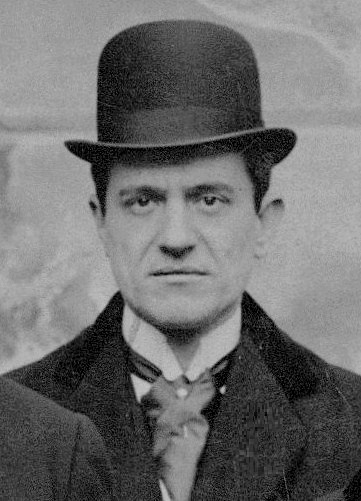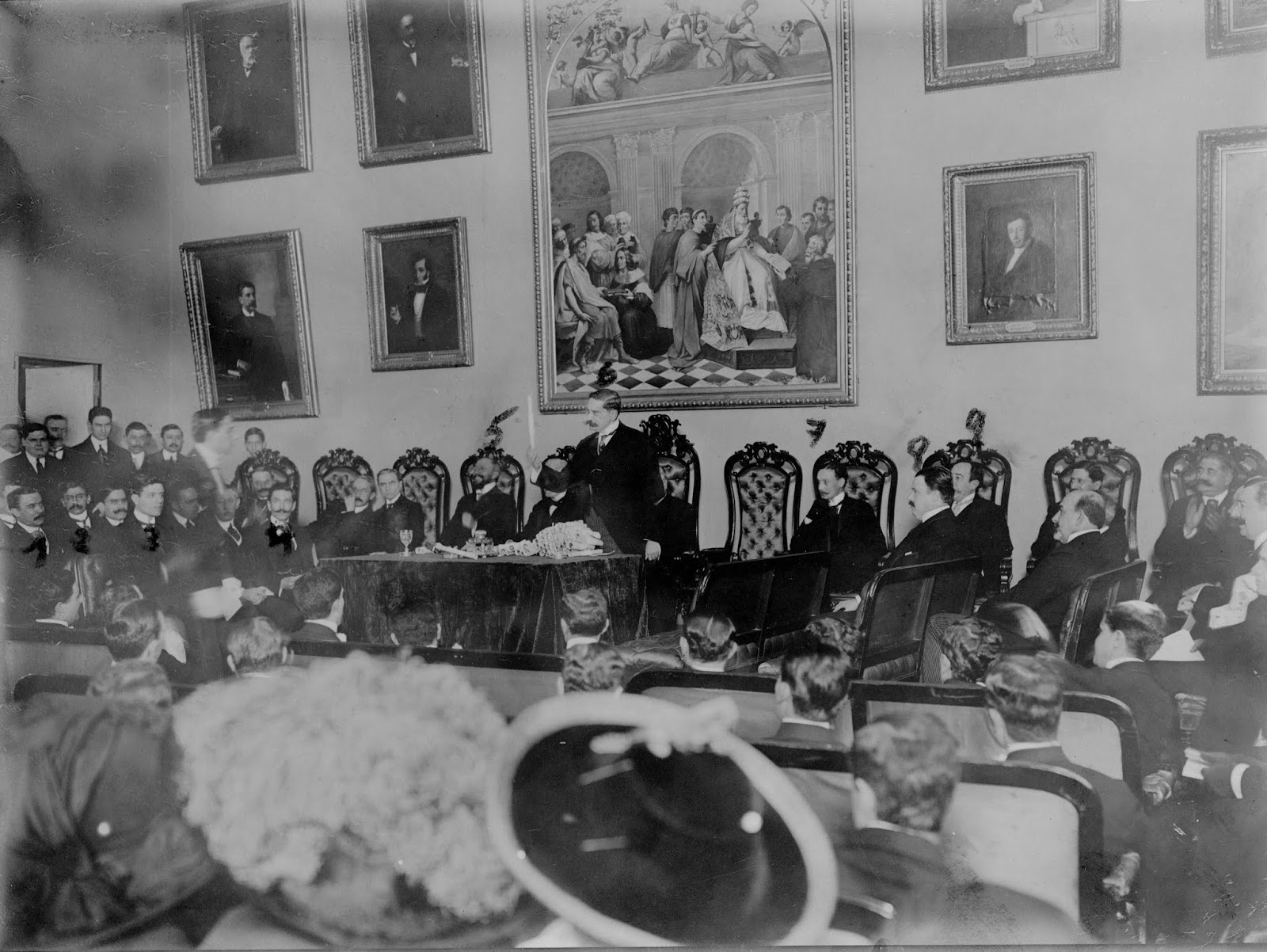Dr. Nicanor de Elía Foster
Nicanor Zenón Carlos de Elía Foster (Buenos Aires, Argentina; June 23, 1864, Santa Fe, Argentina; 1941) was an entrepreneurial and prosperous lawyer for some of the most important companies and institutions of the time, such as the Bank of England (Officially Governor and Company of the Bank of England), Spanish Bank of the Rio de la Plata, Bank of London, Mexico and South America and telephone companies, running water and electricity.
Family
Nicanor de Elía Foster was the youngest son of Máximo Fernando de Elía Álzaga, Argentine born in 1811 and Isabel Foster (daughter of Ricardo Foster and sister of Ana and Enrique Foster), born in 1835 in the City of Rio de Janeiro, Empire of Brazil.
His parents met as a result of the Society that Máximo Fernando de Elía Alzaga had with Ricardo Foster, and they married on Wednesday, January 7, 1863.
Fruit of the Marriage De Elía Álzaga-Foster was born Máximo Ricardo de Elía Foster and Nicanor Zenón Carlos de Elía Foster.
Nicanor married Carolina del Carmen Micaela del Campo Lavalle (daughter of the Argentine military and writer Estanislao del Campo) with offspring: De Elía del Campo; Casas de Elia; Gigena de Elía; Ugarte de Elia.
Biography
Nicanor de Elía Foster graduated from the El Salvador College of the City of Buenos Aires, where he was born in 1864. After practicing some years as a lawyer in his place of origin, around 1894, Dr. Nicanor De Elía arrives in the City of Rosario in the Province of Santa Fe, Argentina.
His profession absorbs him in these early days, and carries out famous lawsuits against large companies.He was part in resonant judgments, which would allow him to consolidate an important fortune.
The demonstrated ability in the development of these judgments that makes their represented win, arouses the interest of many commercial and financial firms, especially foreign capitals, which in the following decade and in a successive and systematic way incorporate him as Legal Counsel:
The Bank of England (Officially Governor and Bank of England Company), Spanish Bank of the Rio de la Plata, the English Bank of South America, the River Plate Trust Loan and Agency Company, the Telephone Company, the Running Water Company, the Drainage and Sewerage Company, the Provincial FF.CC, the Argentine Land and Investment Company and the Electric Light Company.
Performance in the Argentine Republic
The preeminence of his professional activity leaves him a place to be Director of the FF.CC of the City of Rosario and District, Majority Shareholder and member of the C.D. of Ceramics 45 Teodoro de Bary against the Land Company of the Province of Santa Fe and Charles Jewel against the FF.CC Central Argentino - ATPR-. Alberdi.
Between coffee and coffee at the Jockey Club of the City of Rosario in the Province of Santa Fe, Argentina, where Nicanor is a member, and some evening at the opera, he has been active in Politics for a few years.
As Procurator, he becomes a Director of the Iron Roads Company of the Province of Santa Fe and the New Zealand and Rio de la Plata Mortgage Company, as well as Legal Representative of the two most important banks, English, in the city: the Bank of London and Rio de la Plata and the English Bank of South America, and the Hydraulic and Drainage Company of the City of Rosario.
Between 1900 and 1912, he developed a great corporate activity in spaces that are extremely attractive to him, in love with horse breeding; It is part of the C.D. the Treasury Market and the Rural Society; Accompanying these tasks that may seem overwhelming stimulating their sociability with those of the Foreign Residents Club and the Jockey Club of the City of Rosario.
In 1907 he is an ideal professional with enough capital to be part of a society dedicated to bricks.
In 1928 and 1929 he held the position of President of the Rotary Club of Rosario in the Province of Santa Fe.
Sale of Property to Argentine writer Lucio Victorio Mansilla
On Friday, August 5, 1887, The Argentine Writer and Military, Lucio V. Mansilla bought the land located on Tres de Febrero Street from Nicanor de Elía, between Olazábal and Blanco Encalada streets in the City of Buenos Aires, Argentina.
There he built the mansion, which he baptized with the name of Villa Esperanza but urged by debts, on September 6, 1892 the writer had to sell the property to Eliseo Basch, who shortly thereafter also broke away from it.
Until 1991, the municipality of Buenos Aires rented the residence to house the Directorate of Teacher Training, but in early 1998, this unit also moved, the house was put up for sale and the neighbors decided to join for their defense against the uncertain future of the mansion and the rumors of a possible demolition. Neighbors in the area gathered to form a commission to defend the house and a commission was created, supported by several associations. Finally, the traditional mansion located in the Belgrano neighborhood, City of Buenos Aires, cannot be demolished since it was declared a National Historic Monument, on Wednesday, August 11, 1999 by the Buenos Aires Legislature.
The house has value not only for its age, but also for its neoclassical style, one of a kind in Belgrano, City of Buenos Aires, Argentina. Since 1914, the municipality rented the mansion, where a School operated, always being a space for convocation.
President of the Rotary Club Rosario
With the sponsorship of the Rotary Club of Buenos Aires, the President of Rotary International and District Governor, Mr. Arturo Covernton accepted the responsibility of studying and organizing the formation of a Rotary Club in a city that, by mid-1922, was located in full economic, cultural and social development.
As a result of these efforts, on Friday, September 8 of that year, the first Rotary Club of the interior of the Republic of Argentina, the Rotary Club Rosario, was founded in the facilities assigned by the Jockey Club of Rosario, which On Thursday, January 11, 1923, he received his charter.
Its initial core was made up of the aforementioned Mr. Arturo Covernton as First President and Dr. Nicanor de Elía Foster as Vice President and then President in 1928 and 1929 respectively.
Death
Nicanor de Elía Foster dies after an extensive professional career in 1941 and his remains rest in the City of Rosario, Province of Santa Fe, Argentina.






